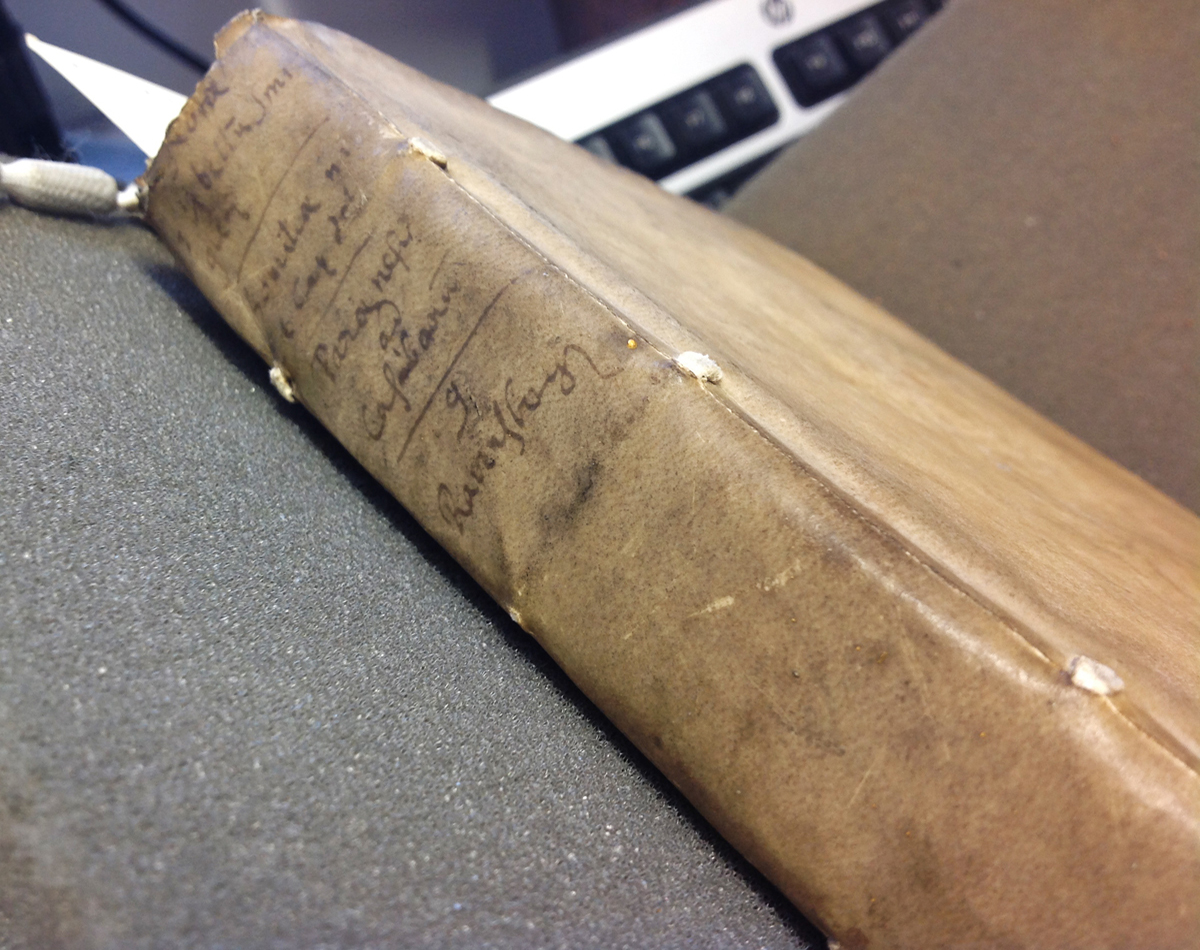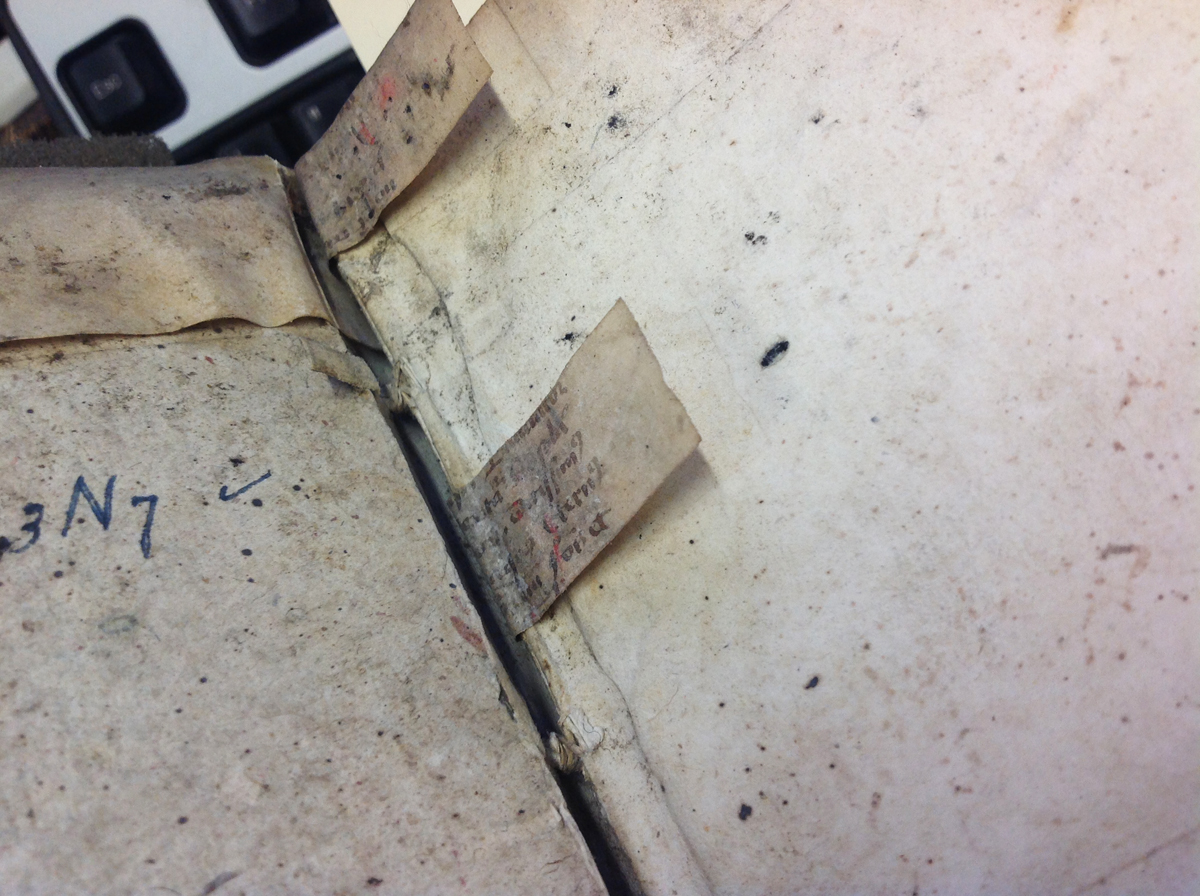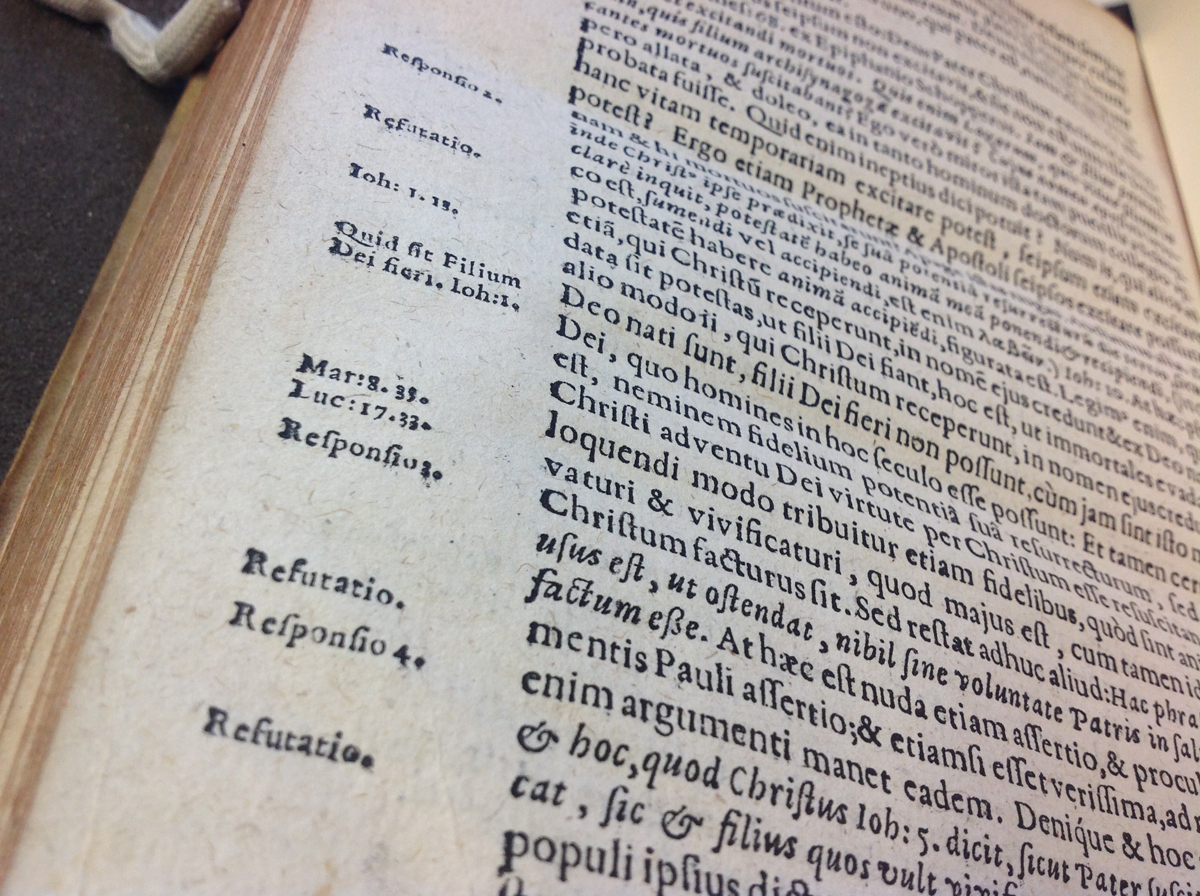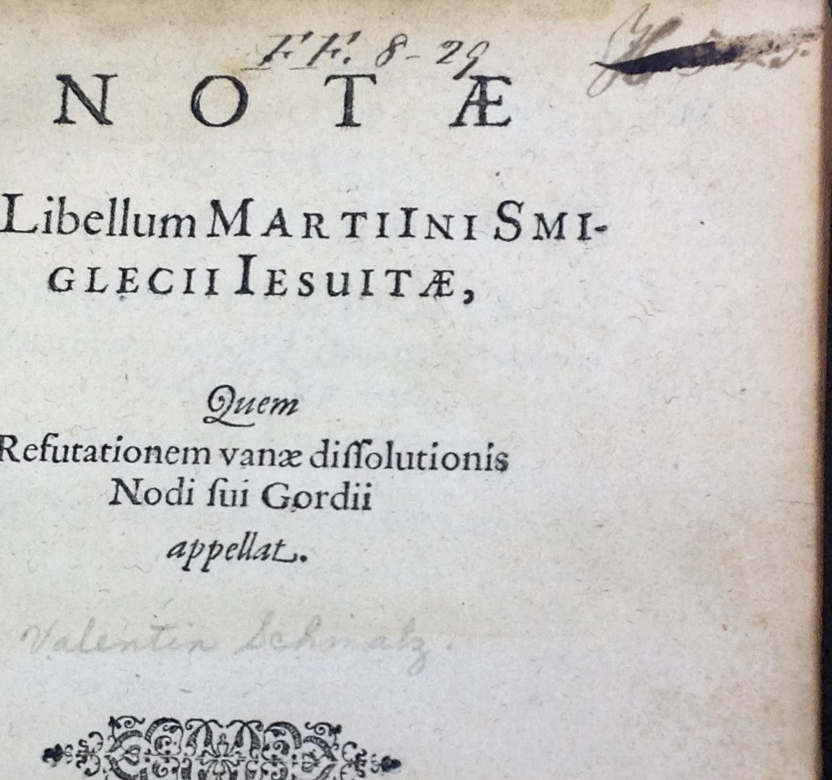Reading the Collections, Week 50: A Socinian Sammelband in St Andrews
A newly catalogued volume in Special Collections offers a vista onto one largely forgotten moment in the history of European religion. The volume, a modest vellum bound quarto, is a sammelband of five items written by Valentin Smalcius (1572-1622) and printed at the press of Sebastian Sternacki in the village of Raków, then part of the Polish-Lithuanian Commonwealth.

Smalcius (Valentin Schmalz in his native German) was born in Gotha to an intellectual family. His promising university career at Strasbourg was interrupted, however, when he was converted to Socinianism by the Polish scholar Andrzej Wojdowski. Wojdowski and his fellow Socinians were followers of the heterodox Italian theologian Fausto Paolo Sozzini (1539-1604) who taught that there was neither a Trinity nor original sin, but that Jesus only came into existence with the virgin birth and that humans had been created mortal. This radical rejection of beliefs at the core of western Christianity had already led to the widespread persecution of the Socinians and, by allying himself with such a radical group, the young Smalcius placed himself outside the pale of ordinary religious life in early modern Europe.

After a peripatetic decade travelling through central Europe, Smalcius came to the Polish village of Raków, which had been founded only a generation before by the Calvinist nobleman Jan Sienieński. Sienieński’s son Jakub was a leading member of the Polish Brethren, a protestant church with Socinian beliefs active in the Polish-Lithuanian Commonwealth, and had founded the Racovian Academy there in 1602, creating an intellectual centre for Socinian thought across Europe. Smalcius settled as a minister to the Brethren in Raków, married a local woman, and acculturated so fully to the rhythms of Polish life that by the end of his career he was keeping his diary in Polish rather than German.

Smalcius also became a leading polemicist for the Socinian cause. He had produced the Racovian Catechism, a key document in the history of Socinian theology, in 1608, and the texts which appear in the St Andrews sammelband date from not long after this, in the years 1614 and 1615. They see him writing against several more orthodox theologians from different confessional camps, including Hermann Ravensperger (1586-1625), Marcin Śmiglecki, SJ (1564-1618), and Jakob Schopper (1545-1616), as well as composing a homily on the first book of the Gospel of John, one of the foundational biblical texts against which Socinian theology defined itself. The specific texts included are Smalcius’s Notae in libellum MartIni Smiglecii Iesuitae (1614), Ad Isaacum Casaubonum paraenesis (1614), Homiliae decem supra initium cap: I. Evanglii D. Ioannis (1615), Refutatio thesaurum . . . a Iacobo Schoppero . . .propositarum (1614), and Responsio ad scriptum Hermanni Ravenspergeri (1614).

Smalcius’s works were published by the first (and only) printing press in Raków. It had been founded by Alexy Rodecki but by 1614 was in the hands of his son-in-law, Sebastian Sternacki (1574-1638). Sternacki was the leading Anti-trinitarian printer in Poland – probably in Europe – publishing numerous commissions from the Socinian intellectual elite, including works by Jan Crell (1590-1633), co-translator of the Racovian New Testament into German. By publishing with Sternacki, Smalcius was going to the obvious source for disseminating Socianian writings but was also making a statement about his central role in Socinian and Anti-trinitarian theology.
The historical moment which allowed the printing of these works was only a brief one. In 1638 the Catholic Polish crown shut down the academy at Raków as well as Sternacki’s press, the church of the Brethren there was demolished two years later, and the Socinian community found themselves cast out into a Europe riven apart by the Thirty Years War. We do not know how this sammelband found its way from Raków to St Andrews, but the early university shelfmark indicates that it had reached Scotland not long after its publication. The theologians in St. Mary’s College collected books from across Europe and in all probability these works by Smalcius were bought in as part of their scholarly endeavours. We can only speculate what influence, if any, these Socinian tracts had on the Calvinist divines of St Andrews, but nonetheless they survive as a token of the rich cultural exchange which took place across Northern Europe during the tumultuous seventeenth century.
Dr Kelsey Jackson Williams
British Academy Postdoctoral Fellow

[…] Source: Reading the Collections, Week 50: A Socinian Sammelband in St Andrews […]